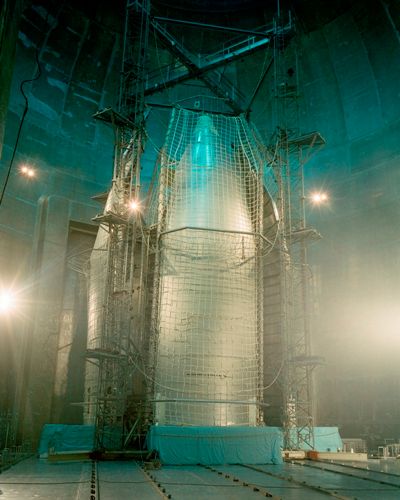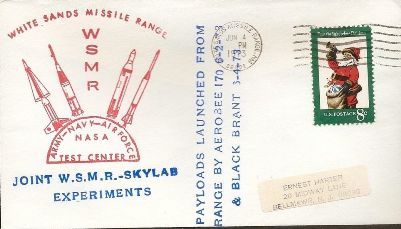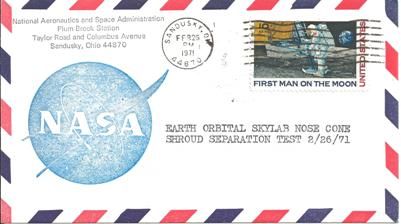Space Cover #235: Skylab Development and SupportAnother area of Skylab collecting is the area of development and support covers. This space cover of the week posting contains two such covers.
The first image is that of a cover for a Skylab Nose Cone Shroud Separation Test that took place at NASA’s Plum Brook Station in Sandusky, Ohio on February 26, 1971. A shroud protected the upper section of the Skylab space station, including its solar power arrays, during the launch. The shroud needed to be jettisoned once the laboratory reached orbit and the pieces of it had to remain away from the Skylab itself so no damage would take place. But where to test such a procedure? In a vacuum chamber of course. When it was constructed, the Space Power Facility (SPF) at Plum Brook was the world's largest vacuum chamber. It stands more than 122 feet high, 100 feet in diameter and thus provided a perfect vacuum environment to perform the shroud test.

A NASA picture shows the Skylab shroud assembly in the SPF prior to testing.
A series of tests needed to be performed to verify the systems for jettisoning the payload shroud. Three separate tests of the explosive system for separating the shroud into four segments were successful, with only minor discrepancies requiring attention of the engineering teams.

Many support rocket flights took place before and during the actual Skylab flights from multiple ranges. These flights tested instruments that would be aboard Skylab and once Skylab was launched the flights would be used to calibrate the Apollo Telescope Mount (ATM) and other instruments. Skylab support launches included a Minuteman launch from Vandenberg AFB, California and sounding rockets, such as the Aerobee and Black Brant, from White Sands Missile Range, New Mexico and Poker Flat Research Range, Alaska. Pictured above is a cover for a Black Brant launch from WSMR.














